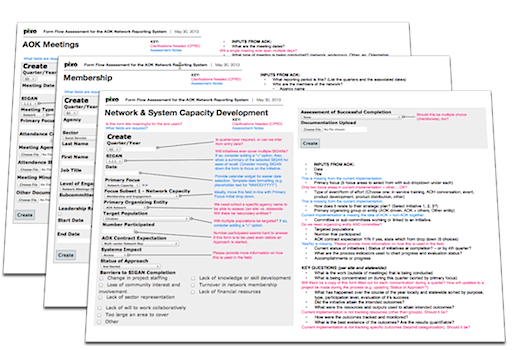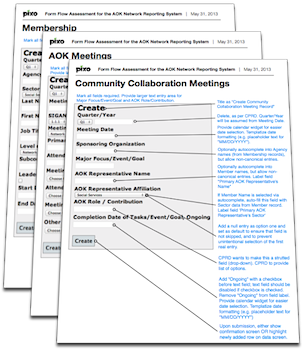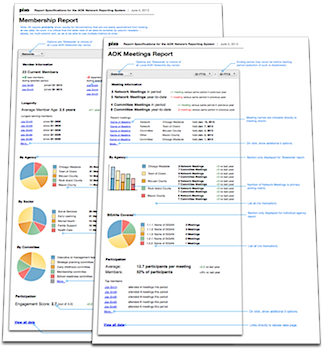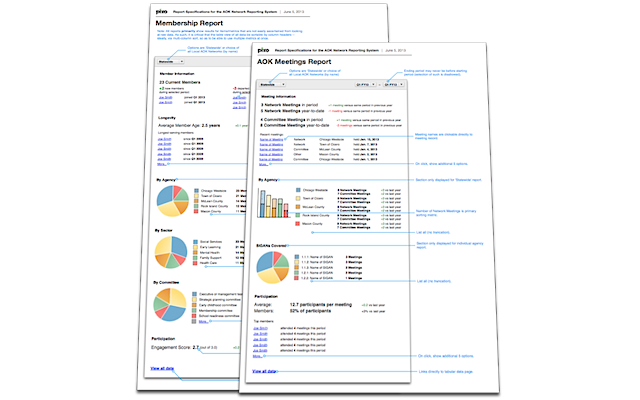In early 2013, the Center for Prevention Research and Development approached Pixo to assist with a project for one of the organizations that they work with, All Our Kids. They needed to digitize a paper-based data collection and reporting process for a wide network of affiliated organizations. At the same time, the cost of the project needed to remain within the confines of a mid-sized grant. Knowing that even an abbreviated UX process would improve the end result greatly, Pixo contacted me to see what could be done.
I focused my efforts on two primary components: improvements to the data collection forms, and specification for the output of reports. As wholesale reworking of the entire form structure was off the table, as per the client, I instead worked to improve the microinteractions and intra-form flow. First, I posed a series of questions to the client, using annotated screenshots
 Download the assessment process documentation (0.5mb)
Download the assessment process documentation (0.5mb)
Then, through a series of conversation and iterations, I arrived at a final set of recommendations for the data collection forms.
 Download the specifications (0.5mb)
Download the specifications (0.5mb)
As the development team worked on implementing those forms, I turned my attention to the reporting output from the system. Because there were no legacy reports that the client wanted to emulate, I was much more free to recommend the best options for answering the questions posed by the initial client brief.
 Download the specifications (0.8mb)
Download the specifications (0.8mb)
As I understand, the initial rollout of the All Our Kids reporting system has been a success. It has vastly reduced the quantity of paper forms that need to be collected/maintained, and it has making reporting much faster and more reliable. Based on the success of the pilot program, the client is already planning for future enhancements to the system.
